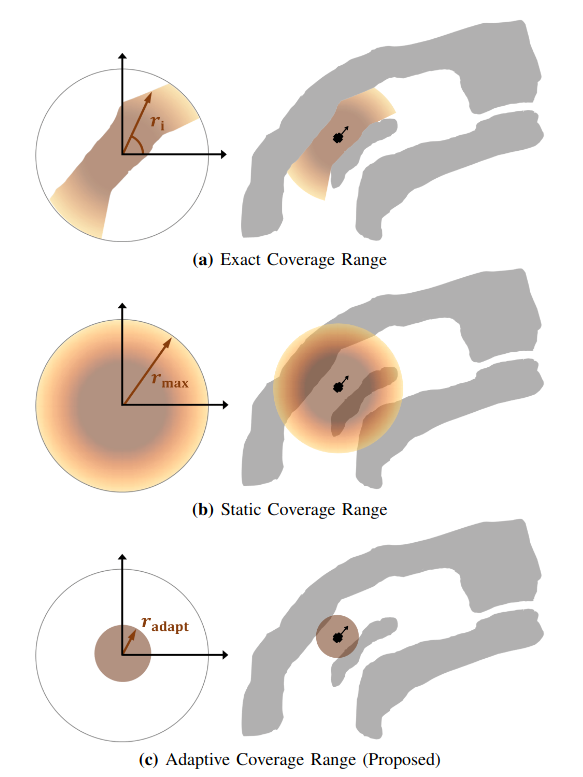Adaptive Coverage Path Planning for Efficient Exploration of Unknown Environments
A. Bouman, J. Ott, S.K. Kim, K. Chen, M. Kochenderfer, B.T. Lopez, A. Agha-mohammadi, and J. Burdick, “Adaptive Coverage Path Planning for Efficient Exploration of Unknown Environments,” IEEE/RSJ International Conference on Intelligent Robots and Systems (IROS), Kyoto, Japan, Oct 2022, pp. 11916-11923, doi: 10.1109/IROS47612.2022.9982287.
Paper: https://ieeexplore.ieee.org/abstract/document/9982287
Abstract
We present a method for solving the coverage problem with the objective of autonomously exploring an unknown environment under mission time constraints. Here, the robot is tasked with planning a path over a horizon such that the accumulated area swept out by its sensor footprint is maximized. Because this problem exhibits a diminishing returns property known as submodularity, we choose to formulate it as a tree-based sequential decision making process. This formulation allows us to evaluate the effects of the robot’s actions on future world coverage states, while simultaneously accounting for traversability risk and the dynamic constraints of the robot. To quickly find near-optimal solutions, we propose an effective approximation to the coverage sensor model which adapts to the local environment. Our method was extensively tested across various complex environments and served as the local exploration algorithm for a competing entry in the DARPA Subterranean Challenge.

